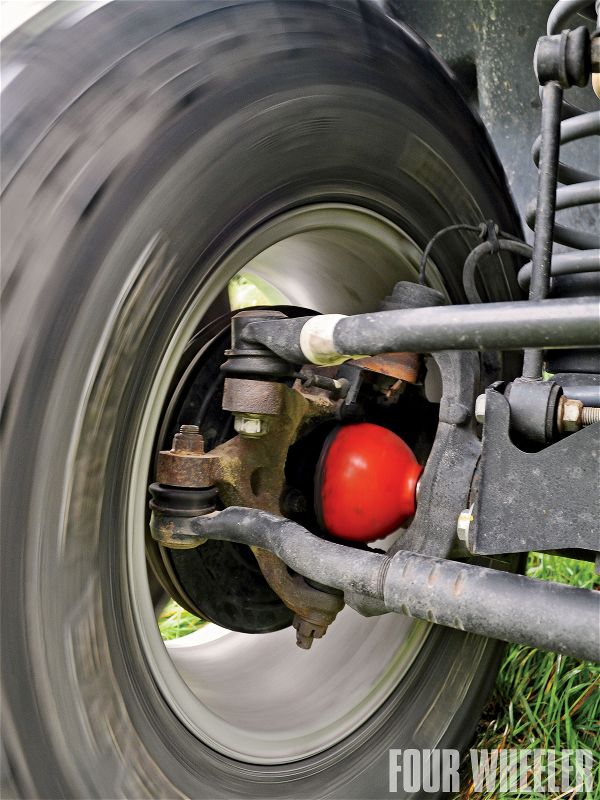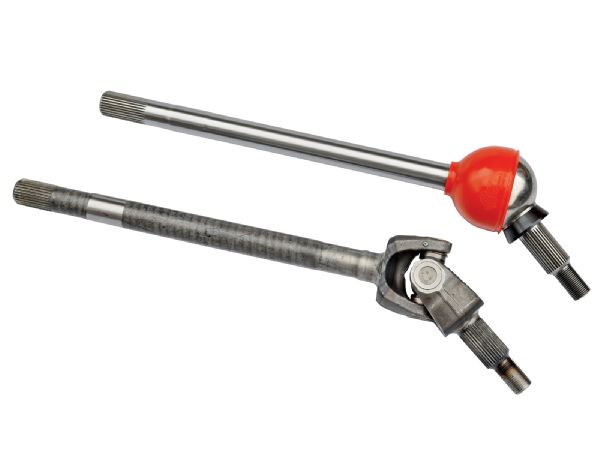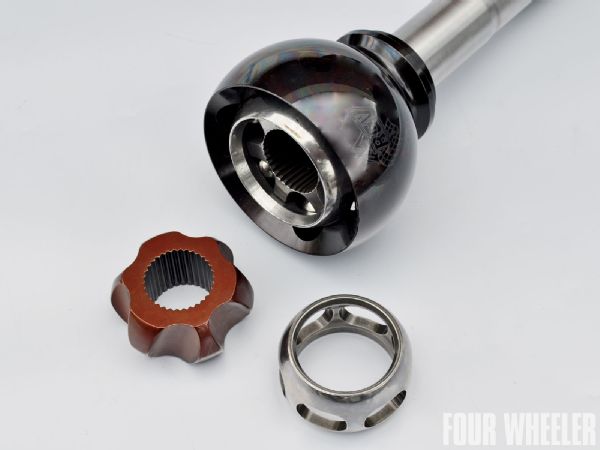
There are very, very few people who have a good memory of a CV joint on the trail. Usually, the memory is stained with wheel-bearing grease and involves removing shredded bits of a Land Cruiser or IFS CV joint that exploded. So why would anyone consider replacing the U-joint-equipped axleshafts in the front of their straight-axle 4x4 for one with CV joints? The folk at RCV Performance gave us a few reasons to ponder.

First, look at why CV joints have a bad rap. The reason factory CV joints fail in IFS applications is that they are operating at angles beyond those for which they were designed. When the vehicle is lifted, the angle of the halfshafts increases, often beyond what the original design can handle. Second, factory materials are usually just good enough for the loads that a stock-sized tire places on them. Go from a 23-inch tall tire to 35s or taller, and you've more than doubled the stress on the CV joint. Not to mention ditching the 140hp six-banger for a V-8 and doubling the final drive ratio with a new transfer case and deeper axle gears. Finally, original CV joints come with a flimsy rubber boot to keep grease in and contaminants out. These get torn with increased operating angles and trail debris, thus pulling the pin on the hand grenade.
RCV Performance took a new approach to the CV joint, and has developed several specifically for severe duty in off-road vehicles. They offer an upgrade for IFS trucks such as GM, Hummers, and Mercedes G-Wagen applications. These have CV joints that operate at the increased angles that a lifted IFS requires, as well as being made from better materials. They also designed a tough polyurethane seal that tolerates extreme angles and is tough enough to endure trail abuse. Then they did something cool. They made replacement axleshaft assemblies that include CV joints for straight-axle Dana 44 and 60 applications. They also made some for the super abusive rockcrawl competition crowd who like to stand on the throttle with the front steering at full lock. Guess what? The CV joints are holding up better than a traditional U-joint in these applications.
 Who knew there would come a day when an upgrade for a solid-axle frontend would include a high-performance CV joint? RCV Performance makes axleshafts for any application from a variety of high-strength aircraft-quality material. Their CV joints are made from billet steel for superb strength, and they can operate at greater angles than the factory U-joint without binding. They also created a distinctive orange polyurethane seal to stay put and tolerate everything an off-road vehicle dishes out.
Who knew there would come a day when an upgrade for a solid-axle frontend would include a high-performance CV joint? RCV Performance makes axleshafts for any application from a variety of high-strength aircraft-quality material. Their CV joints are made from billet steel for superb strength, and they can operate at greater angles than the factory U-joint without binding. They also created a distinctive orange polyurethane seal to stay put and tolerate everything an off-road vehicle dishes out.
In addition to a stronger joint at the steering knuckle, there's another benefit for us regular off-road guys with straight axles. The binding that you experience at full steering lock with a U-joint that causes "crow hop" in four-wheel drive is eliminated. So now you can use more throttle when the front wheels are turned, and you don't get that annoying push-back on the steering wheel when you're turning tight.
We think they're onto something here. Among other kits and custom applications, RCV Performance makes a front axleshaft kit for Jeep Wranglers with Dana 44s (both TJs and JKs) with their CV joints. They also just introduced kits for Dana 30s. We decided to give them a try, so we took a 2008 Wrangler to Unlimited Offroad Centers in Fenton, Michigan, where Justin Whalen did the swap for us. Whether you're replacing broken parts in your front axle, or considering stronger parts before you break things, this is an upgrade worth considering.
 These CV joints are made from all-new parts, engineered and machined by RCV Performance. This is their Pro 4 CV joint used on 500+hp off-road racing trucks weighing more than 5,000 pounds, and the Dana 44 kit we installed has very similar components: A billet-steel bell, hardened-steel inner race and hardened steel ball-bearing cage.
PhotosView Slideshow
These CV joints are made from all-new parts, engineered and machined by RCV Performance. This is their Pro 4 CV joint used on 500+hp off-road racing trucks weighing more than 5,000 pounds, and the Dana 44 kit we installed has very similar components: A billet-steel bell, hardened-steel inner race and hardened steel ball-bearing cage.
PhotosView Slideshow





 PhotosView Slideshow
PhotosView Slideshow

